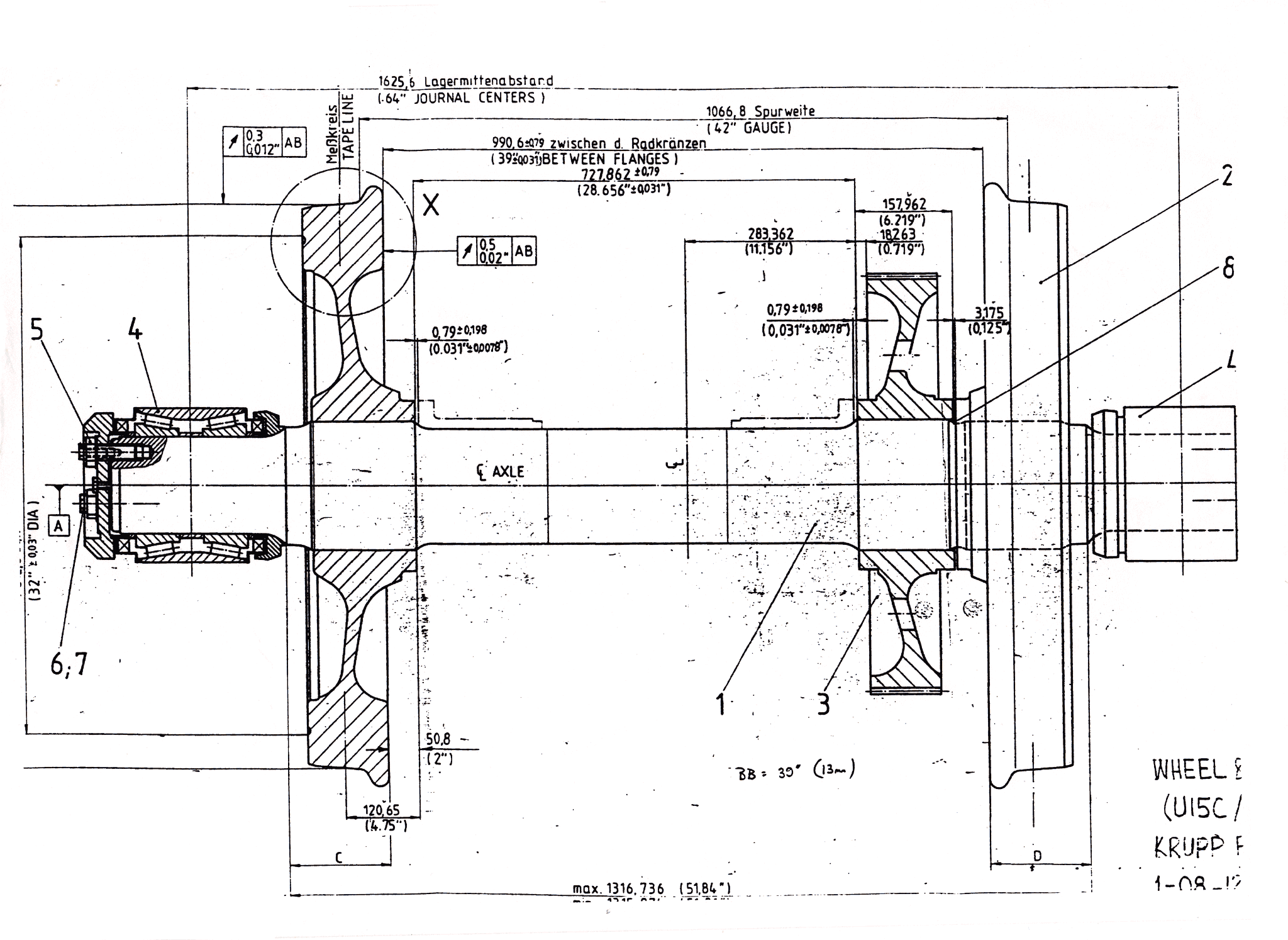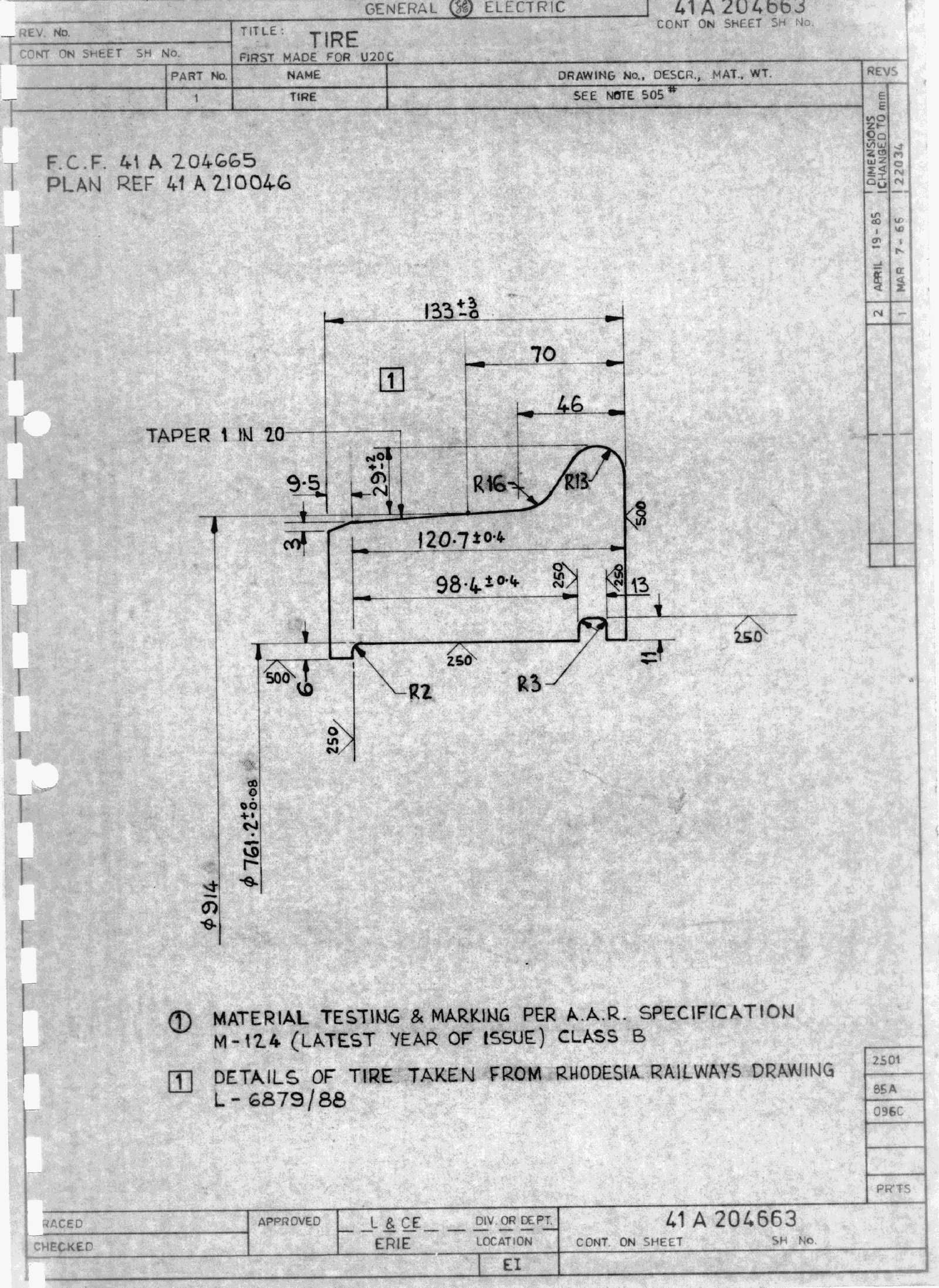There is occasionally mention of tread wear allowance and the convenience it provides us by using wheels slightly under the nominal beginning of life diameter. What would be a reasonable allowance for tread wear before wheel replacement becomes necessary? My specific interest is for diesel and electric locomotives.
Thanks, John
Worst-Case Tread Wear
-
grovenor-2685

- Forum Team
- Posts: 3922
- Joined: Sun Jun 29, 2008 8:02 pm
Re: Worst-Case Tread Wear
Generally there is between 2 and 3 inches difference in diameter between a new tyre and one ready for scrap. Its not just an issue of wear although wear is the cause. The wear usually affects the profile, especially of the flange and the wheels have to be turned to restore the profile to an acceptable shape. each such turning removes a layer off the tread reducing the diameter. The wheels have a specified minimum tyre thickness, dependent on load and once that is reached the tyre has to be scrapped. As one example, on DLR we need to turn approx annually and can get about 8 turnings before scrapping.
This wheelset drawing has the minimum diameter marked on the left

The wheels start as monobloc but once they reach the limit the flange can be turned off and a new tyre fitted.
This is the drawing for a replacement tyre.

regards
Keith
This wheelset drawing has the minimum diameter marked on the left

The wheels start as monobloc but once they reach the limit the flange can be turned off and a new tyre fitted.
This is the drawing for a replacement tyre.

regards
Keith
-
Horsetan

- Posts: 1382
- Joined: Tue Jul 29, 2008 9:24 am
Re: Worst-Case Tread Wear
That's interesting. I think the monobloc approach was also taken by the builders of the S160 2-8-0, who used it for the front pony wheels. Not sure if that was also true for the WD 2-8-0s and 2-10-0s.
That would be an ecumenical matter.
-
John Fitton
Re: Worst-Case Tread Wear
grovenor-2685 wrote:Generally there is between 2 and 3 inches difference in diameter between a new tyre and one ready for scrap. Its not just an issue of wear although wear is the cause. The wear usually affects the profile, especially of the flange and the wheels have to be turned to restore the profile to an acceptable shape. each such turning removes a layer off the tread reducing the diameter. The wheels have a specified minimum tyre thickness, dependent on load and once that is reached the tyre has to be scrapped. As one example, on DLR we need to turn approx annually and can get about 8 turnings before scrapping.
This wheelset drawing has the minimum diameter marked on the left
The wheels start as monobloc but once they reach the limit the flange can be turned off and a new tyre fitted.
This is the drawing for a replacement tyre.
regards
Keith
Keith,
That's what I call a gold standard response! Thank you very much. My specific case is for the tyes of an AL5, modelled in electric blue. I suppose that since the locomotives were generally not in this livery for many years before repainting, one can surmise, in the absence of hard data, that in fact the wheels were probably in good shape for the whole time they were in electric blue, and certainly no more than an inch below the original 4 ft diameter. As Jim S-W had for his conversion, I have some old 3'10" dia wheels, but I think for a newish loco I will order some 4 ft dia wheels from ultrascale. Thanks you again, very informative.
John
Return to “Diesel and Electric Locomotives”
Who is online
Users browsing this forum: ClaudeBot and 1 guest